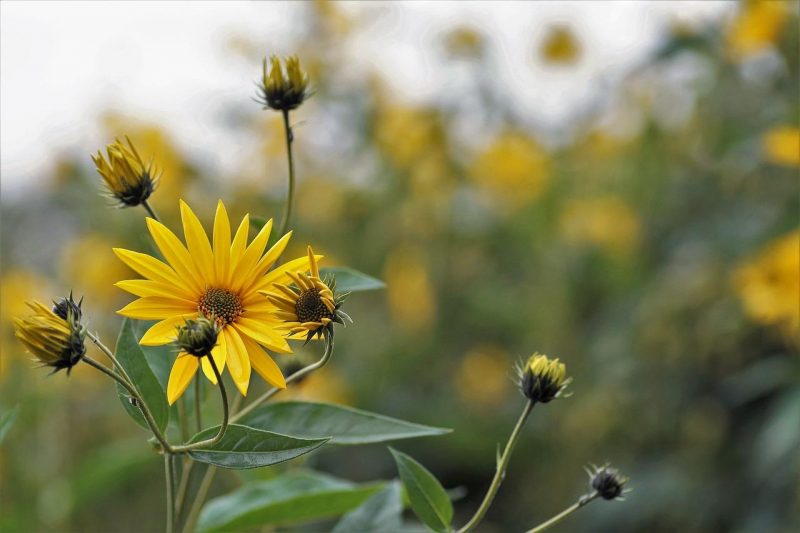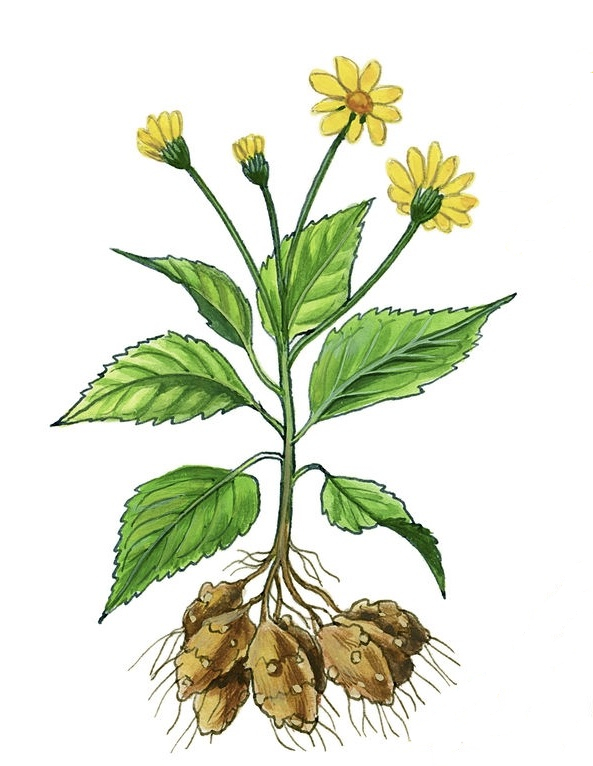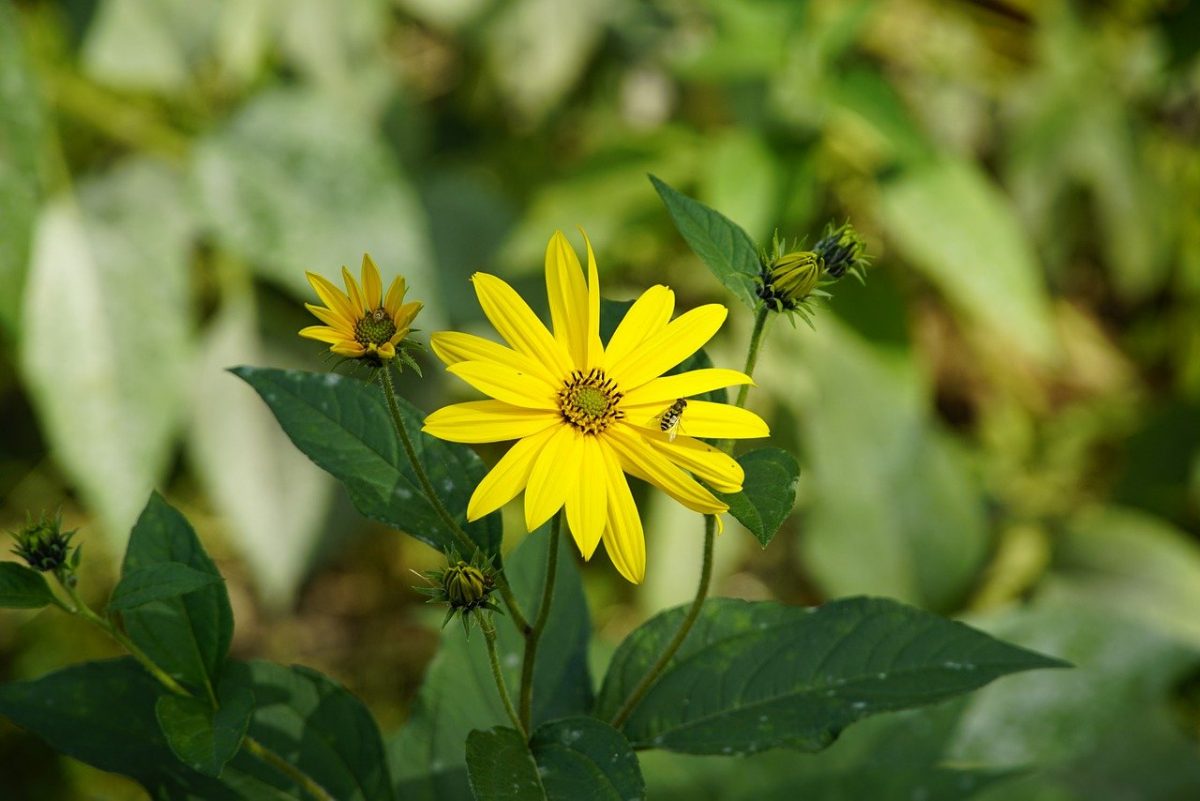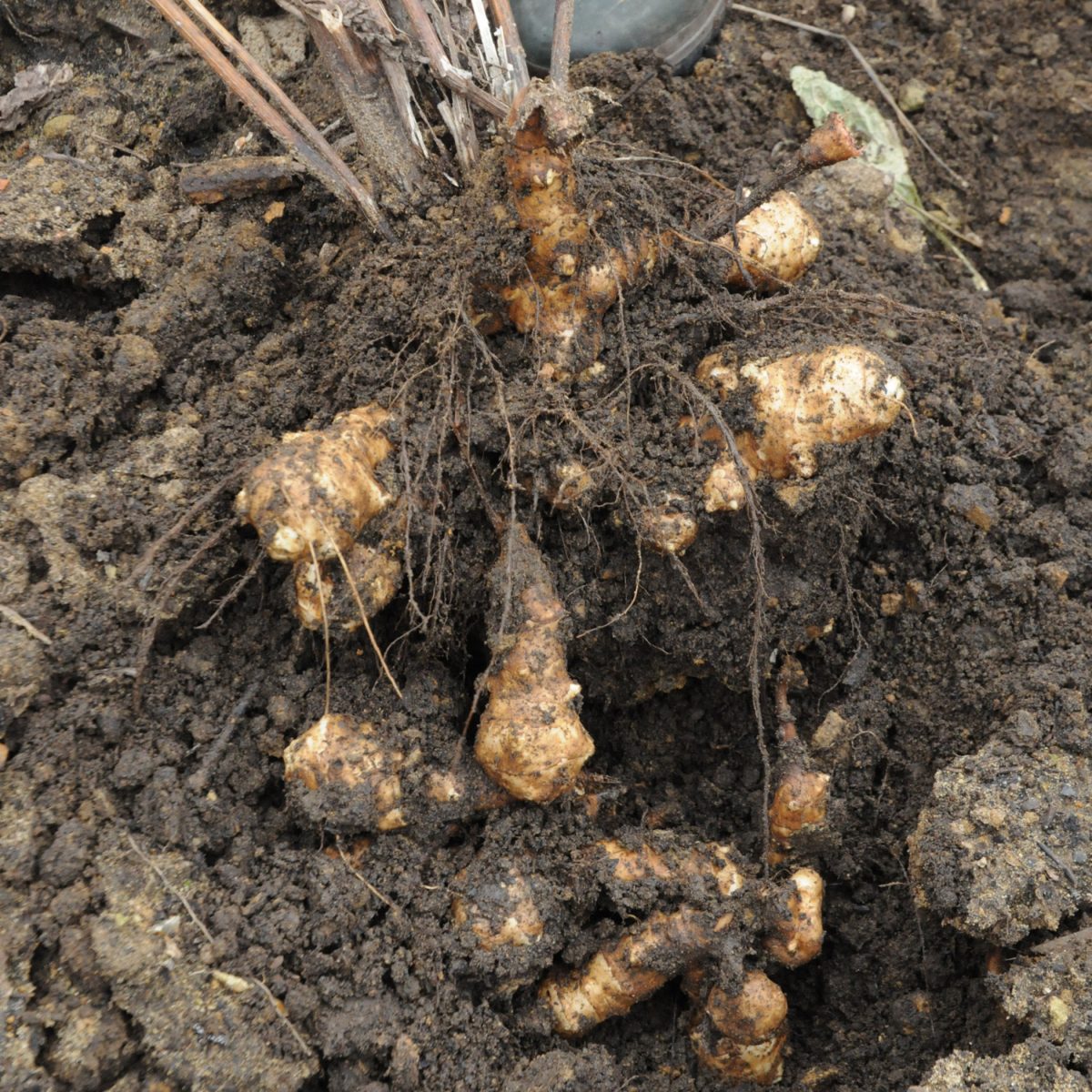Jerusalem artichoke, information about crop management

Jerusalem artichoke (Helianthus tuberosum) is a plant that belongs to the Asteraceae family. It is cultivated for its underground stems that have a high nutrient content. These contain insulin, sucrose, levulin, protein, mineral salts, etc. This vegetable is also used in animal feed and the alcohol industry. The Jerusalem artichoke plant is thought to have originated in North America but was also found in southeastern Canada. It is a popular plant in central and western Europe, being intensively cultivated.
Being a perennial plant, it develops in the soil underground stems called rhizomes. The root system is well-rooted in the soil, reaching lengths of 80 cm. The rhizomes have fibrous roots, supported by secondary branches that ensure water and mineral salt absorption. The stem is up to 3 meters high, rough, and branched. The leaves have different shapes: Those at the top side are ovate-lanceolate, and those at the underside are ovate cordate. The flowers are small and yellow, resembling sunflowers. The fruits are 5-6 mm long, gray, and have darker spots.
Climate and soil requirements
It is a species resistant to low temperatures, but for optimal growth, Jerusalem artichoke needs an optimum temperature of 15-27 degrees Celsius. In summer it regulates its metabolic processes so that it can withstand heatwaves and short periods of drought. It can make use of the water reserves in the lower part of the soil profile thanks to its well-developed root system. It prefers light soils with a sandy-clay or sandy-loam texture.
Cultivation
Crop rotation
A four-year rotation is recommended. It can be grown after grasses, straw cereals, clover, alfalfa, annual legumes, maize, cabbage, flax, root, or bulbous plants.
Soil preparation
After clearing the land, the soil can be tilled to destroy weeds and plant debris. Plowing should be done immediately, at a depth of 28-30 cm. For compact or heavy soils, the soil should be scarified (soil compaction considerably reduces production). After plowing or scarifying, the land must be leveled. Soil preparation for planting is done by mobilizing the soil to a depth of 14-18 cm, using a combine or power tiller. At this stage, complex organo-mineral fertilizers can be applied.
Recommended products
-
You can find products on a different store
Change Store -
You can find products on a different store
Change Store -
You can find products on a different store
Change Store -
You can find products on a different store
Change Store -
You can find products on a different store
Change Store -
You can find products on a different store
Change Store -
You can find products on a different store
Change Store -
You can find products on a different store
Change Store -
You can find products on a different store
Change Store -
You can find products on a different store
Change Store -
You can find products on a different store
Change Store -
You can find products on a different store
Change Store -
You can find products on a different store
Change Store -
You can find products on a different store
Change Store -
You can find products on a different store
Change Store -
You can find products on a different store
Change Store -
You can find products on a different store
Change Store -
You can find products on a different store
Change Store -
You can find products on a different store
Change Store -
You can find products on a different store
Change Store -
You can find products on a different store
Change Store -
You can find products on a different store
Change Store -
You can find products on a different store
Change Store -
You can find products on a different store
Change Store
Planting
It is recommended to use healthy, disease and pest-free planting material. Planting can be done in spring and it is recommended to respect the following scheme: 70 cm distance between rows and 40 cm distance between plants per row. The planting depth is 10-15 cm. It is very important to respect the planting scheme because the aerial parts of the Jerusalem artichoke grow luxuriantly and need space.
Weed control: It can be done mechanically by 2-3 hoeings. It is recommended to loosen the soil superficially (5-6 cm).
Pest and disease control: it is done by applying treatments with fungicides and specific insecticides. To avoid the appearance of diseases or pests resistant to pesticides, it is recommended to alternate products with different active substances.
Irrigation and fertilization
Jerusalem artichoke tolerates dry periods well, but to get good yields requires abundant watering. Depending on the environmental conditions, 2-3 waterings can be applied with norms of 300 – 350 cubic meters/ha. The plant’s root system makes good use of the soil’s nutrient reserve as well as the fertilizer applied during soil tillage. During the growing season, complex chemical fertilizers (NPK) can be applied, as well as foliar fertilizers.
Recommended products
-
You can find products on a different store
Change Store -
You can find products on a different store
Change Store -
You can find products on a different store
Change Store -
You can find products on a different store
Change Store -
You can find products on a different store
Change Store -
You can find products on a different store
Change Store -
You can find products on a different store
Change Store -
You can find products on a different store
Change Store -
You can find products on a different store
Change Store -
You can find products on a different store
Change Store -
You can find products on a different store
Change Store -
You can find products on a different store
Change Store -
You can find products on a different store
Change Store -
You can find products on a different store
Change Store -
You can find products on a different store
Change Store -
You can find products on a different store
Change Store -
You can find products on a different store
Change Store -
You can find products on a different store
Change Store -
You can find products on a different store
Change Store -
You can find products on a different store
Change Store -
You can find products on a different store
Change Store -
You can find products on a different store
Change Store -
You can find products on a different store
Change Store -
You can find products on a different store
Change Store
Harvesting
In late autumn the aerial stems of Jerusalem artichoke plants must be shortened to about 30 cm to facilitate harvesting. Harvesting is done by hand. The soil is dislodged with a hoe or spade and then the tubers are removed from the soil. The tubers are left to dry for a few days and then stored.
The storage period is a maximum of two months. For this reason, they are harvested gradually according to market demand. After 4 to 5 years, the plantation no longer produces economically and the tubers reduce in size.


















































































































































































































































































































































































































































